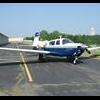Engine Analyzers
-
Members Online
- philiplane
- Chris Higgins
- AdamJD
- redbaron1982
- Andy95W
- Glen S.
- PT20J
- MikeOH
- Sherifferic
- rbmaze
- Ragsf15e
- GeeBee
- Shawnson
- 201er
- Rwsavory
- 4cornerflyer
- Utah20Gflyer
- Aerodon
- Aaviationist
- pkellercfii
- Mikey30V
- Greg Ellis
- CL605
- N201MKTurbo
- geoffb
- Iceman7004
- NickG
- Chris B
- FlyingC
- Slick Nick
- TaildraggerPilot
- Hank


Recommended Posts